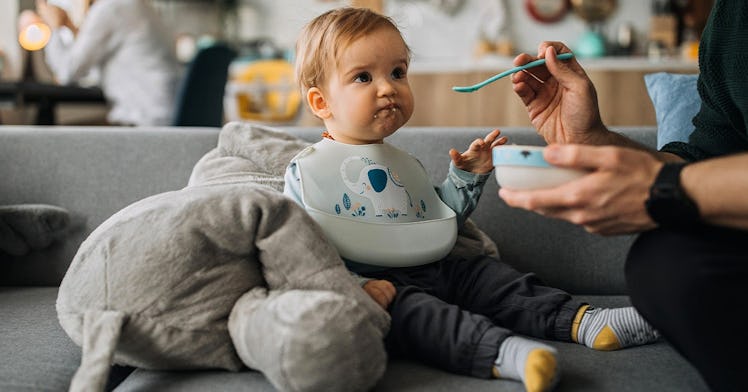When Can Babies Eat Cheerios? A Pediatrician Explains
Cheerios shouldn’t be among the first solid food your baby eats.

For generations, Cheerios have been the quintessential finger food for babies. The breakfast cereal has been a staple in American households since the 1940s when Cheerios first came to market because of their nutritious whole grains, fiber, iron, vitamin B12, vitamin D, calcium, and zinc. Parents find Cheerios particularly appealing because they’re perfectly puffed to dissolve in a baby’s mouth. In other words, they aren’t a choking hazard. But when can babies eat Cheerios? Should they be a first food for your baby? Not so fast.
Before a baby eats Cheerios, they should try other solid foods first. By 9 months, a baby is usually developmentally ready for them, says Dyan Hes, M.D., medical director of Gramercy Pediatrics in New York City.
According to the Centers for Disease Control and Prevention, you should start introducing infants to solid foods beyond breastmilk and formula by 6 months of age. Start with a wide variety of soft fruit and vegetable purees as well as iron-fortified infant cereal to expose your child to the nutritionally dense foods that are crucial for staying healthy into adulthood.
Babies won’t be ready to eat Cheerios for several more months after starting solid foods. In order to feed themselves this cereal, they must develop a pincer grasp, which usually occurs around 9 months, Hes says. “This enables them to pick up a Cheerio between their thumb and index finger.”
The pincer grasp is a fine motor skill essential to a baby’s development. Children use this grasp to feed themselves and then, years later, to hold and write with a pencil. Other fine motor skills will come prior to the pincer grasp, such as the reflexive grasp, a newborn’s ability to grasp your hand, and the crude palmar grasp, which appears around 4 months when your baby starts to reach for objects.
Beyond fine motor skills, your child should be sitting up unsupported before they start snacking on Cheerios. This usually happens around 7 months. A full set of chompers isn’t necessary to enjoy this age-old toddler treat; when babies chew, their gums are usually hard enough to get the job done. A little gagging is nothing to worry about, but if you notice it too often, your baby isn’t ready for Cheerios just yet.
“Babies can suck on Cheerios until they get mushy, and they do not need teeth to chew them,” Hes says. “They’re fun for babies to pick up, and sometimes they don’t even make it to their mouths.”
If your baby has met these milestones, have at it. But remember that with this cereal staple, clean-up is often half the battle. “My office is usually covered in Cheerios by the end of the day, but I’m okay with that,” Hes says.
This article was originally published on